
All right, this one is meant to cover the standard issue Mannlicher 1895 rifles and carbines used by the Dutch Army, Navy, and East Indies forces. We have not had time to research Indonesian modifications, of which there are at least three, KSO rifles, or experimental models.
Army
Rifle Model 1895
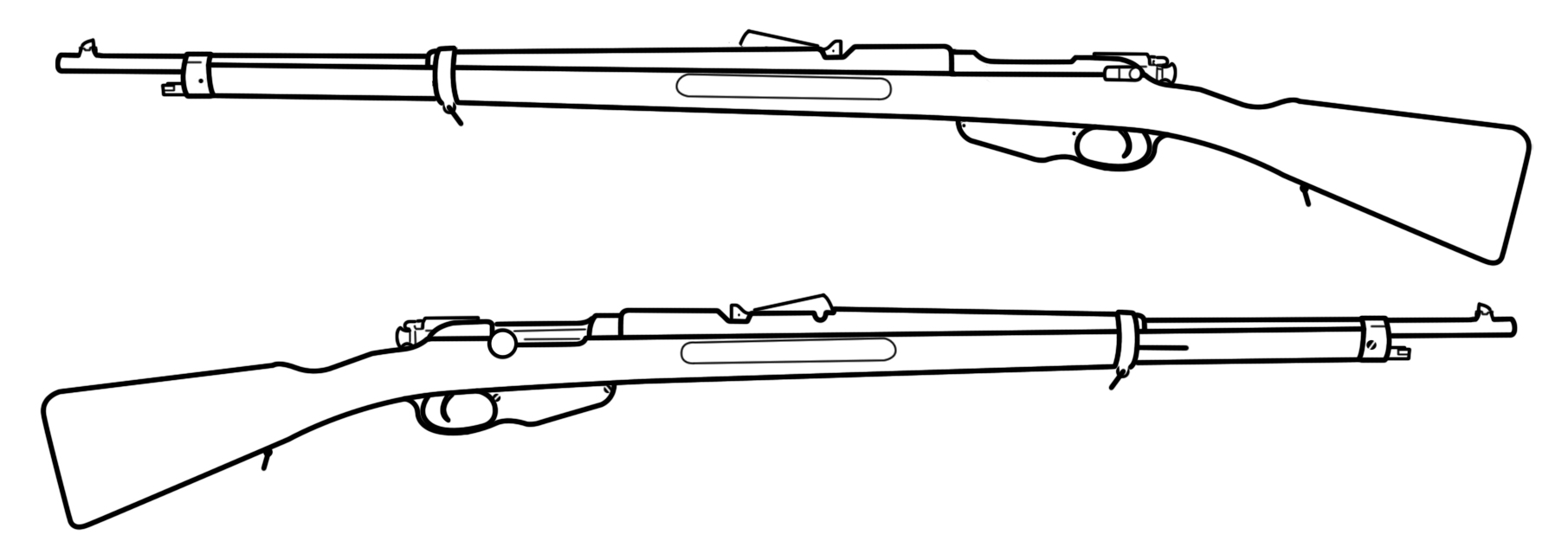
| Date | 1895 | Used By | Infantry | Mag Cover | Absent | Handguard | Full | Sling Swivels | Under/Under |
|---|
This is the original Dutch Model 1895 Long Rifle. We’ve covered it in detail before. Somewhat hard to miss, there are three long rifles in 6.5mm. Most encountered will probably be this one from the Army, but check the other two (Navy and KNIL) in this list to be sure.
Carbine No.1 Old Model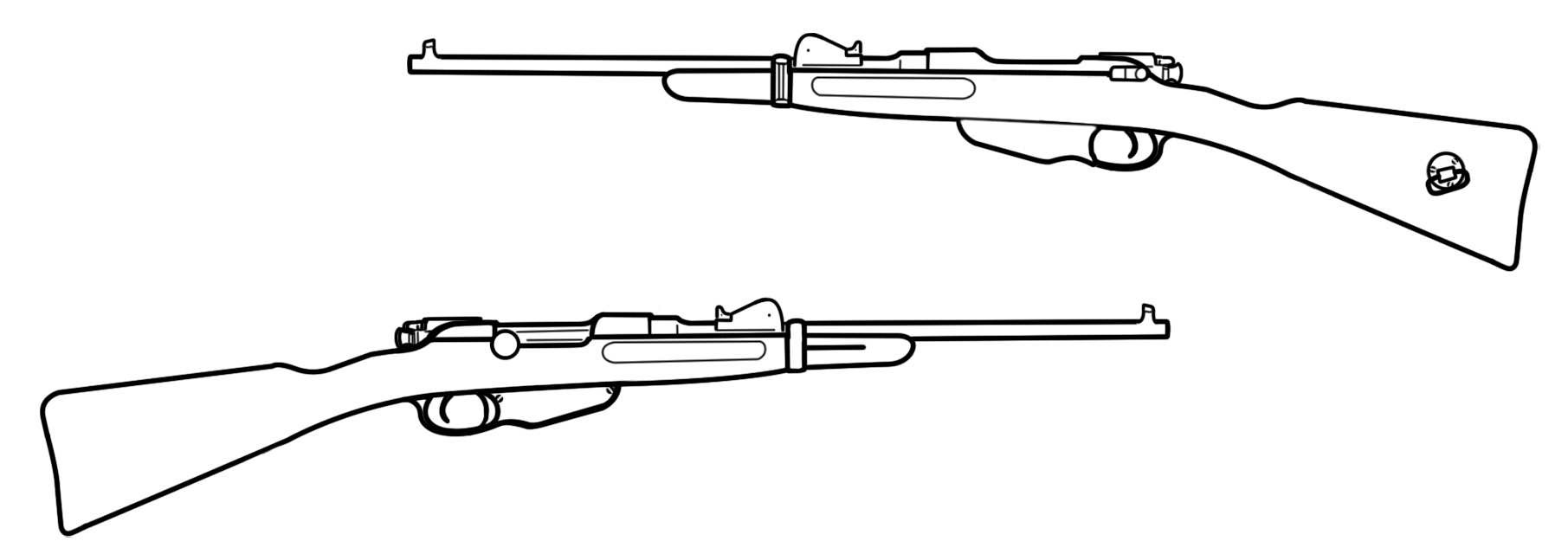
| Date | 1896 | Used By | Cavalry | Mag Cover | Present | Handguard | Absent | Sling Swivels | Side/Side |
|---|
This simple cut-down rifle was introduced as a Cavalry carbine. Originally it was not fitted with a bayonet but later a modified Beaumont socket bayonet was adapted to fit. The oversized rear sling swivel stands out. This gun also sports a wooden magazine cover to keep it from wearing on the soldier’s uniform when worn over the back.
Carbine No.2 Old Model
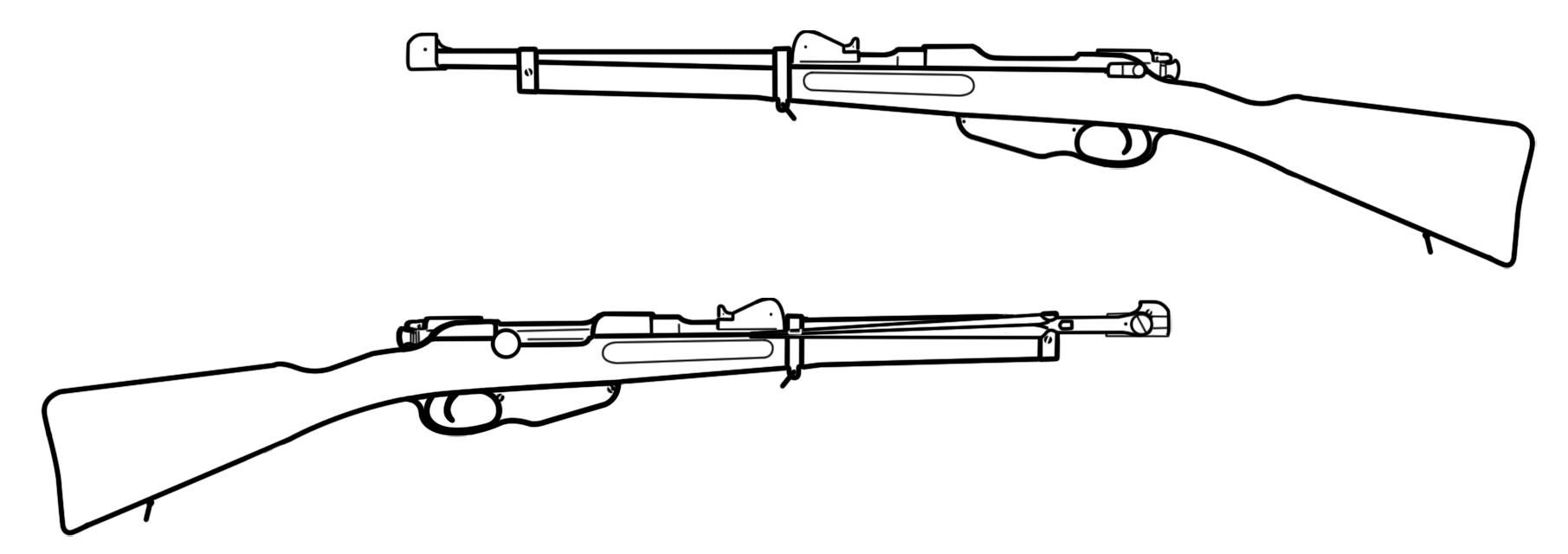
| Date | 1896 | Used By | Military Police | Mag Cover | Absent | Handguard | Absent | Sling Swivels | Under/Under |
|---|
This handy military police carbine sports a folding bayonet along the right side. This hinges downward to swing around and lock into position. The assembly is attached by the unique sleeve/sight protector over the barrel.
Carbine No.3 Old Model
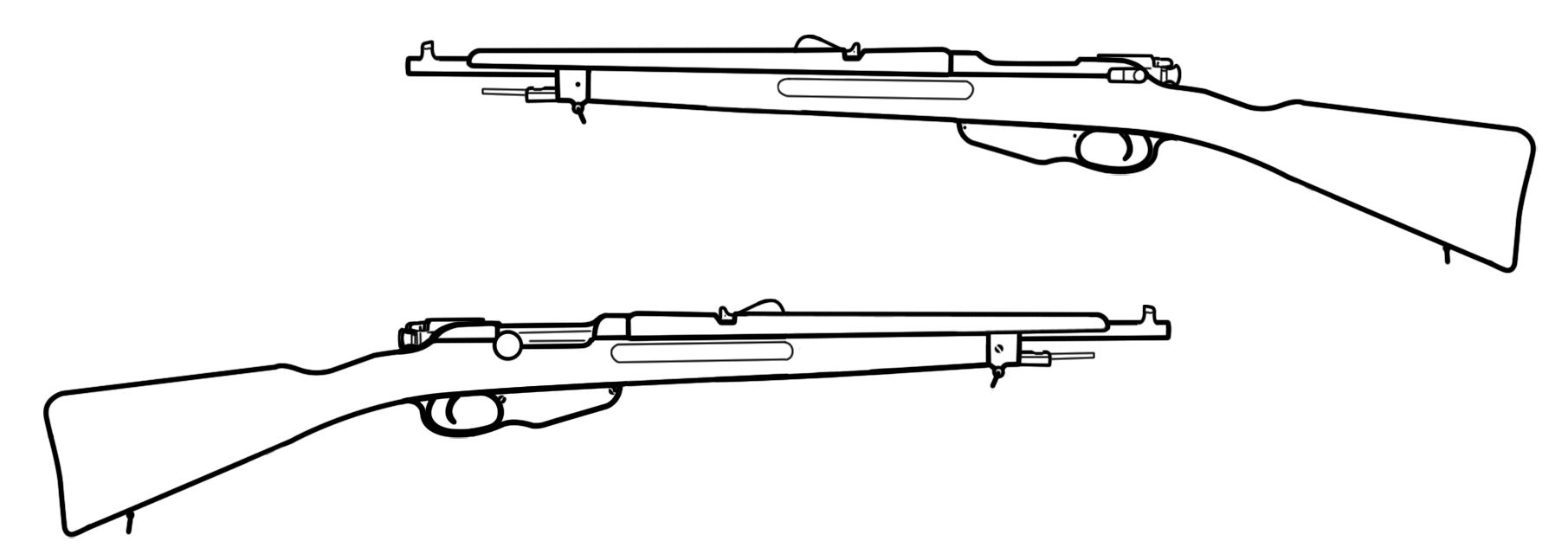
| Date | 1896 | Used By | Engineers, Artillery | Mag Cover | Absent | Handguard | Long | Sling Swivels | Under/Under |
|---|
This carbine was adopted to arm engineers, artillerymen, coastal torpedoers, and other units who would not be primarily using their rifles. The most outstanding feature is its oversized handguard. These were prone to damage and when exported to the U.S. most were stripped from the carbines in order to provide a more uniform marketable gun. Complete pieces are uncommon.
Carbine No.4 Old Model

| Date | 1909 | Used By | Cyclists | Mag Cover | Present | Handguard | Short | Sling Swivels | Side/Side |
|---|
In 1909 this carbine was introduced for bicycle troops and messengers. Similar to the No.3, it has side-mounted sling swivels and a wooden magazine protector in order to be worn on the back. The handguard was also shortened and stops at the barrel band. We’re going to see some “New Models” next and there was a No.4 New Model, but these were identical to the No.1 New Model. They were phased out for the No.1 NM after only about 400 units. No examples are known, or even a sure way to distinguish one from the No.1 NM.
Carbine No.1 New Model
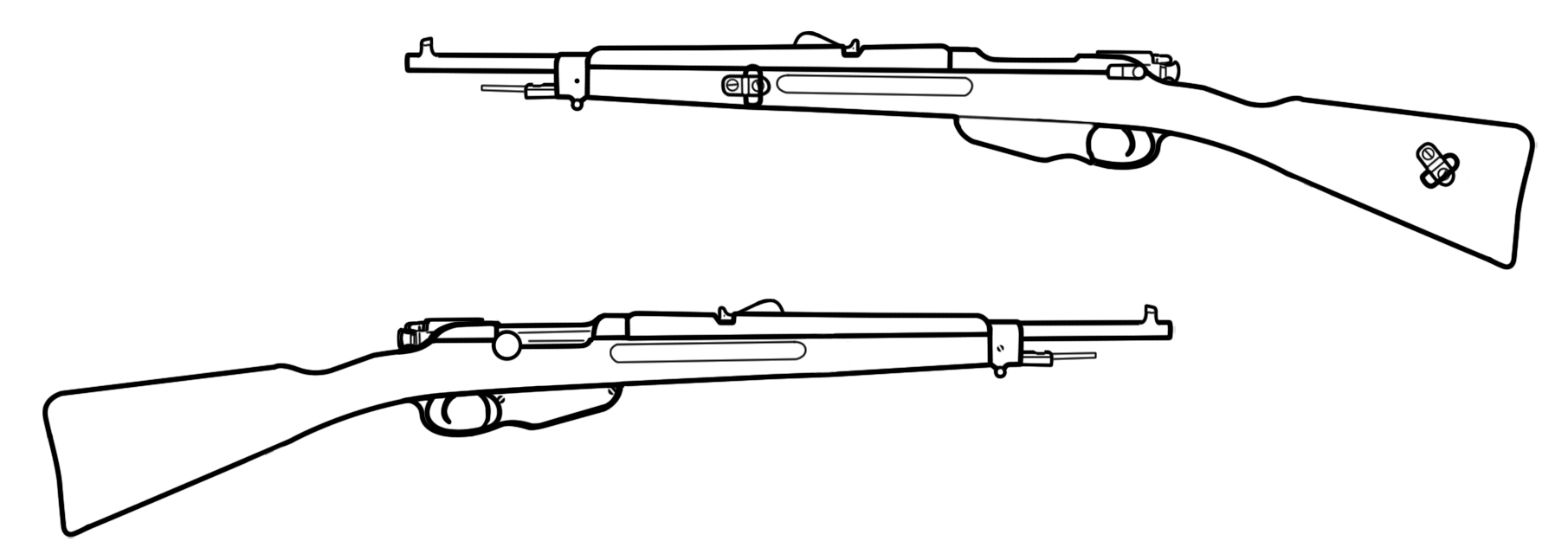
| Date | 1918 | Used By | Cavalry | Mag Cover | Present | Handguard | Long,Short | Sling Swivels | Side/Side |
|---|
This model was introduced in 1918 in order to provide a more standard bayonet mount to the cavalry. The first examples had the same long handguard as the No.3, but this was replaced with the shortened handguard of the No.4.
Carbine No.2 New Model
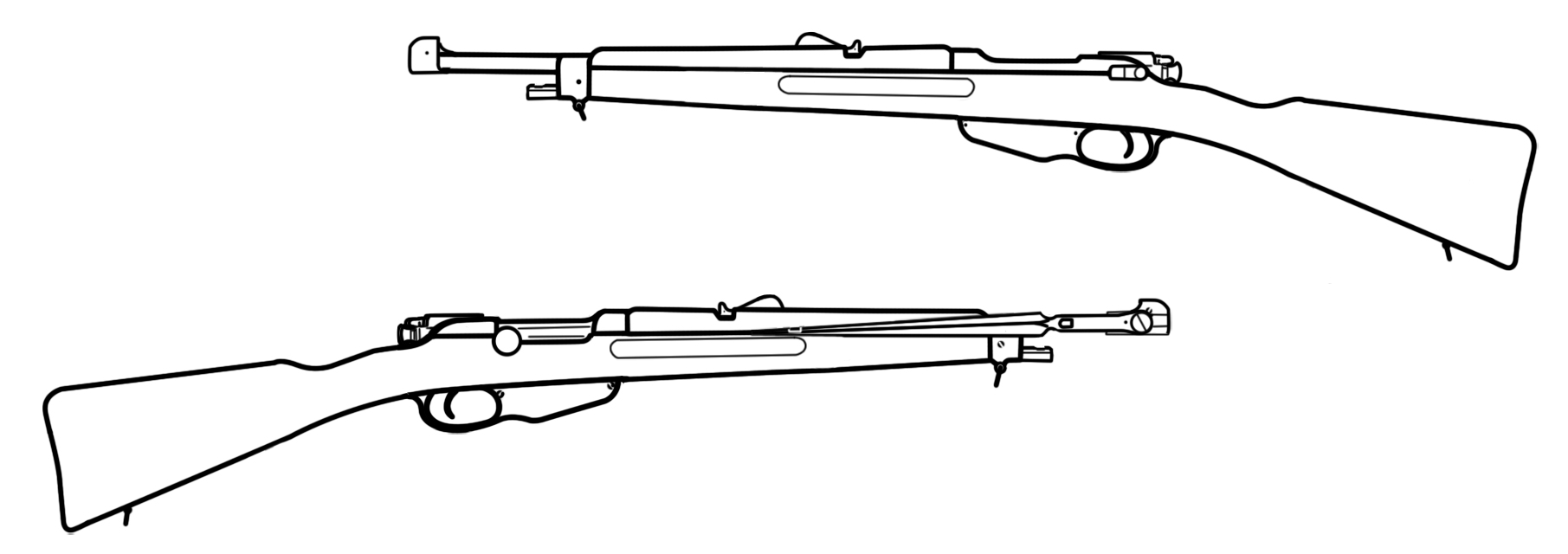
| Date | 1918 | Used By | Military Police | Mag Cover | Absent | Handguard | Short | Sling Swivels | Under/Under |
|---|
A primarily cosmetic change, the No.2 New Model fitted a handguard to this military police carbine. The specialized barrel band was dropped as unnecessary to manufacture and was replaced with a standard one (even though it would be impossible to fit a bayonet to this lug).
Carbine No.3 New Model
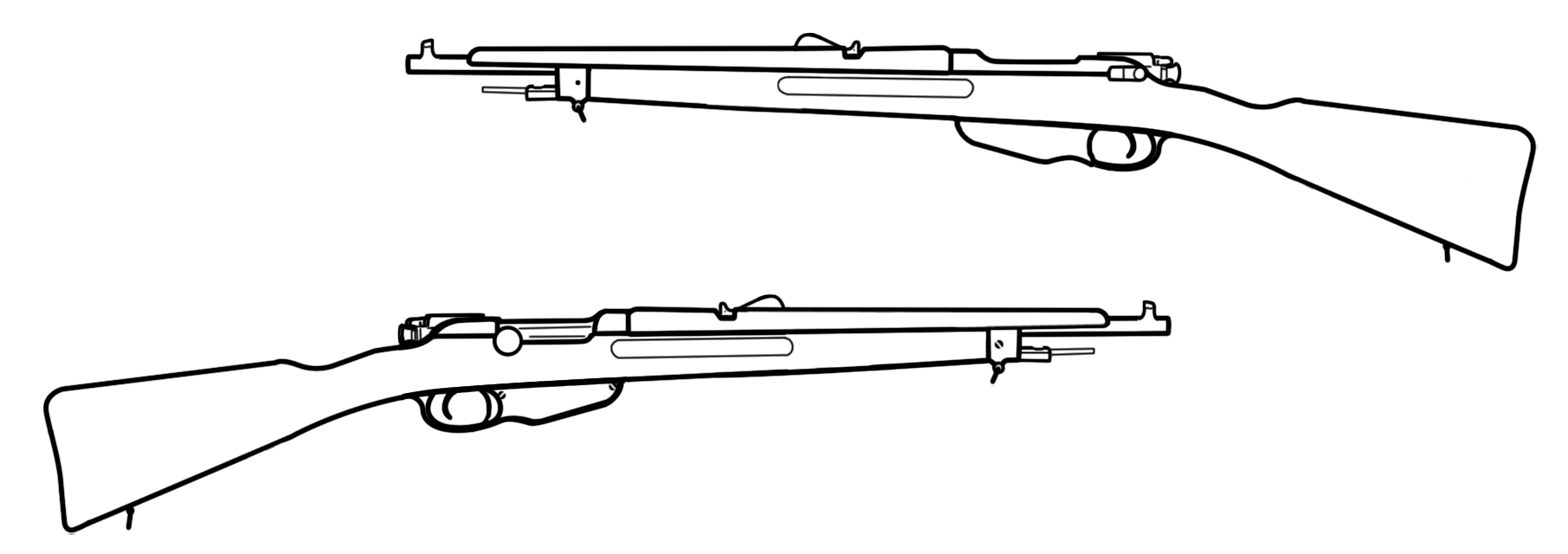
| Date | 1918 | Used By | Artillery, Engineers | Mag Cover | Present | Handguard | Long | Sling Swivels | Under/Under |
|---|
This model is basically the same as the No.3 OM, but with the inclusion of a magazine cover.
Carbine No.3 Modified Model
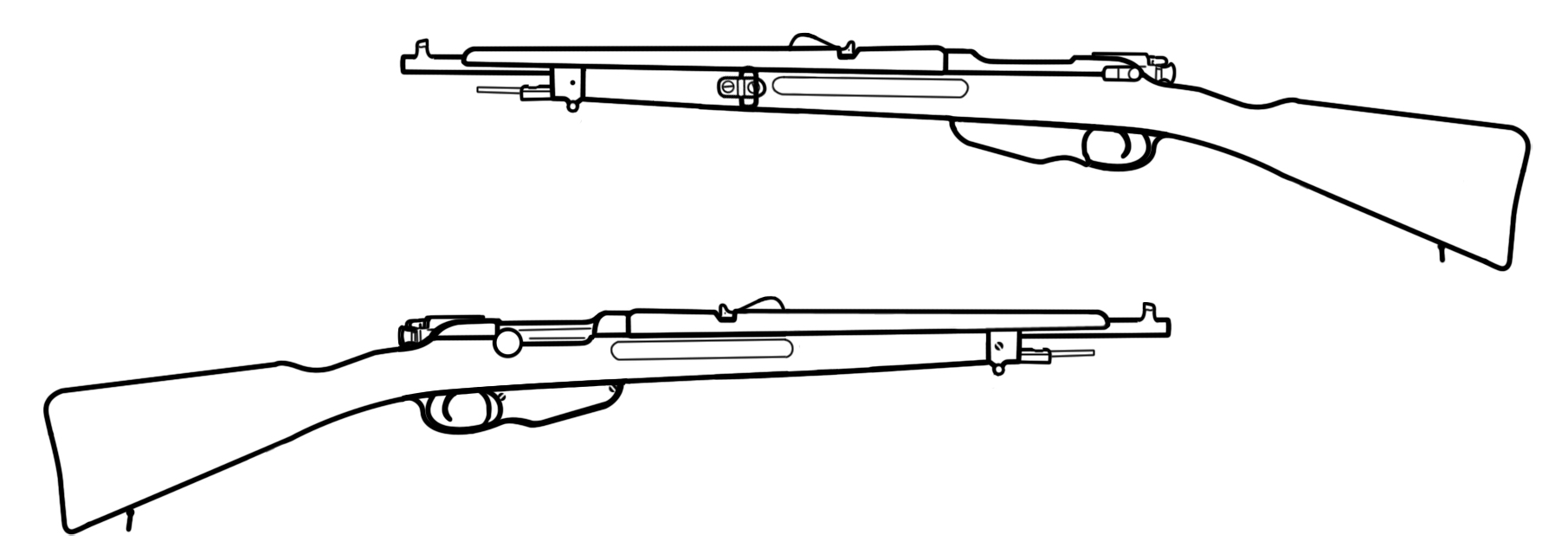
| Date | 1932 | Used By | Signal Troops | Mag Cover | Present | Handguard | Long | Sling Swivels | Side/Under |
|---|
Dutch signal troops were in need of a carbine suitable for being slung on the back. With surplus No.3 NMs available, this model was produced by removing the forward sling swivel and installing one on the left side of the forestock.
Carbine No.5

| Date | 1938 | Used By | Artillery, Anti-Air | Mag Cover | Absent | Handguard | Long | Sling Swivels | Under/Under |
|---|
With the onset of WWII, the Dutch sought to better arm their growing number of troops. Instead of producing new rifles, they delved into the large stores of WWI long guns. Original M1895 rifles were cut down, stocks cut down, handguards fitted. The original rear sling swivels were moved further back and their original holes filled. The swivel-less front bands had them soldered on. Apparently these carbines were given handguards but it appears some were already missing in Dutch service before export. We’ve covered it here.
Navy
Rifle 1895 Naval

| Date | 1895 | Used By | Infantry | Mag Cover | Absent | Handguard | Full | Sling Swivels | Under/Under |
|---|
The Naval long rifle is just about identical to the Army’s. The telltale will be that Naval rifles do not have a letter prefix in the serial number.
Carbine M95 Naval
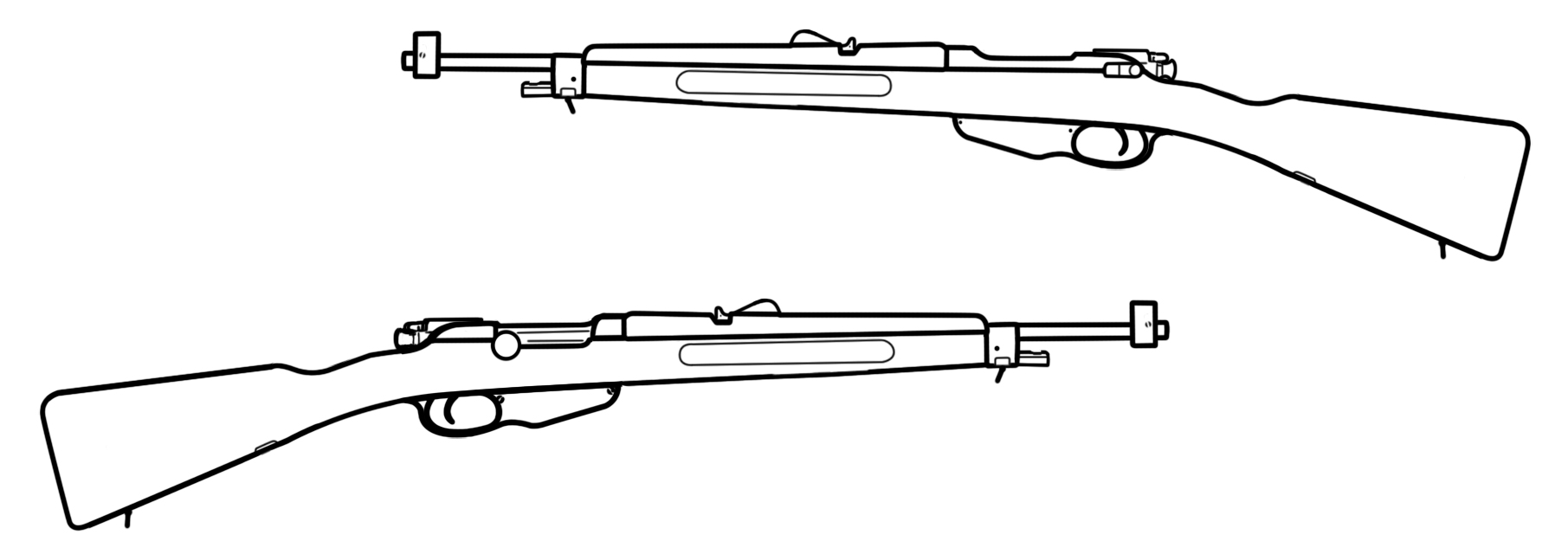
| Date | 1939 | Used By | Navy | Mag Cover | Absent | Handguard | Short | Sling Swivels | Under/Under |
|---|
These carbines follow the same reasoning and process as the No.5. They are unique, however, with their heavy front sight protectors.
KNIL
Rifle 1895 KNIL

| Date | 1897 | Used By | Infantry | Mag Cover | Absent | Handguard | Full | Sling Swivels | Under/Under |
|---|
Originally these guns would have been nearly identical to the Army and Navy guns. The only initial difference was that the handguard uses an additional spring clip to hold it on. In 1911 the finger rest was lengthened and also now turns 90 degrees upwards behind the sight.
Carbine M95 Cavalry
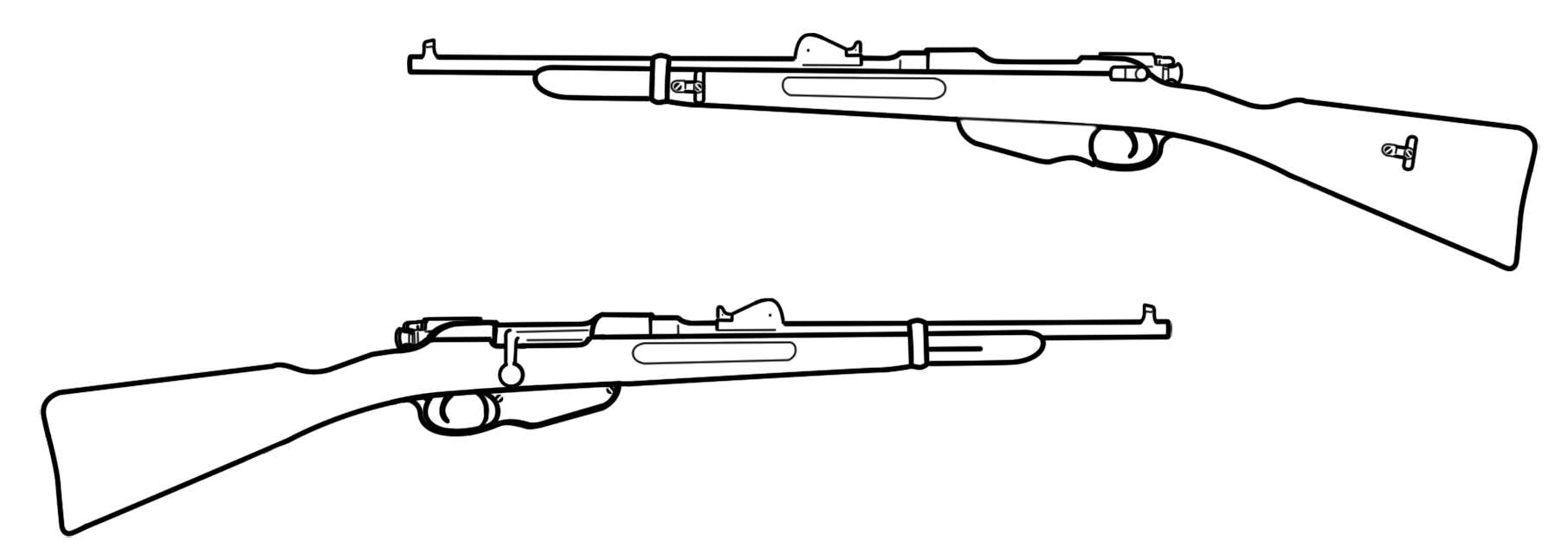
| Date | 1898 | Used By | Cavalry | Mag Cover | Present | Handguard | Absent | Sling Swivels | Side/Side |
|---|
First we should probably point out that KNIL carbines are easy to spot by their slings. Sling swivels on the Army and Navy rifles are simple, heavy wire we’re used to seeing on nearly every other milsurp. The KNILs use stamped steel, shaped into a T-like loop. They are smaller looking at first glance and definitely unique in milsurp circles.
This cavalry carbine released as a colonial compliment to the No.1 OM. In 1902 the solid butt plate was replaced with a skeletonized version that left exposed wood. In 1912 this carbine was updated to include a standard bayonet lug forward barrel band. In 1933 the left-side sling loop was replaced with a larger, circular one.
Carbine M95 Constabulary

| Date | 1898 | Used By | Constabulary | Mag Cover | Absent | Handguard | Absent | Sling Swivels | Under/Under |
|---|
These uncommon carbines are derived from the cavalry model. Otherwise identical, they lack a magazine cover and have underside sling swivels. Like the cavalry, these can also be found with bayonet lugs.
Carbine M95 Artillery
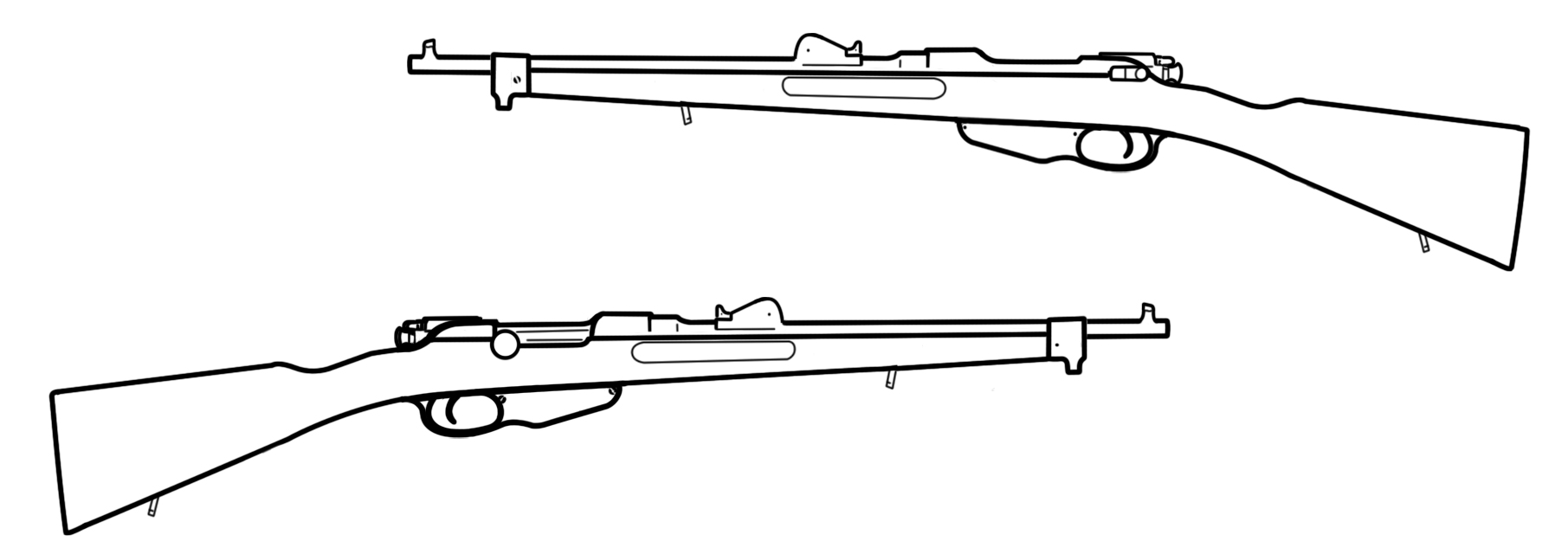
| Date | 1904 | Used By | Artillery | Mag Cover | Absent | Handguard | Absent | Sling Swivels | Under/Under |
|---|
Perhaps one of the strangest Dutch carbines, these artillery models use a “plug in” bayonet without grip plates. Immediately identifiable by the unusual barrel band with a hole in the base.
Carbine M95 Genie
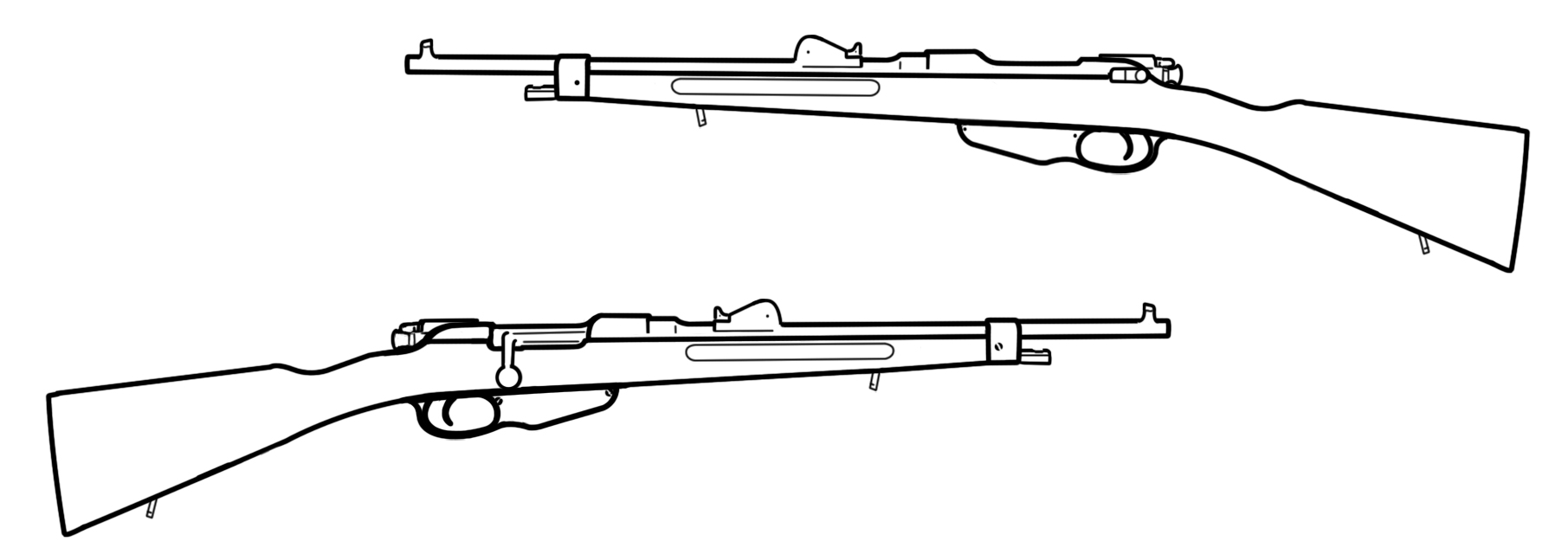
| Date | 1917 | Used By | Pioneers, Engineers | Mag Cover | Absent | Handguard | Absent | Sling Swivels | Under/Under |
|---|
This engineer’s model was introduced in order to arm specialty troops with a carbine accepting a standard bayonet pommel.

C&Rsenal releases their flagship series “Primer” every other week. It focuses on one firearm of the Great War at a time, in depth with animations, live fire demonstrations, and historical context! Our mission is to document and describe historical military small arms from across the world. We hope to share our love for all the attention that went into the design, development, manufacture, and issuance of these pieces.
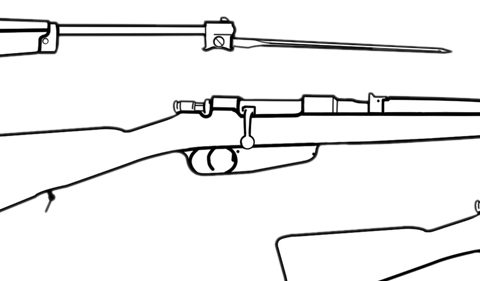
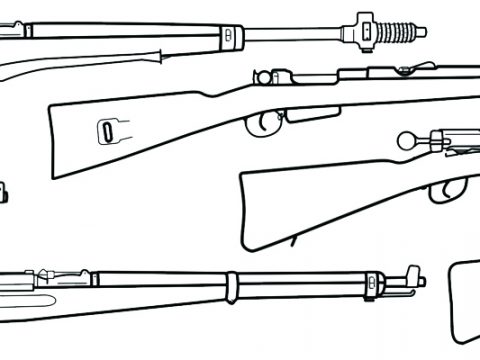
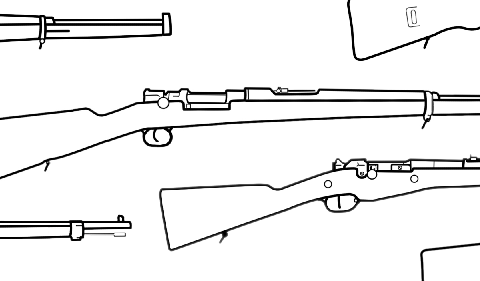
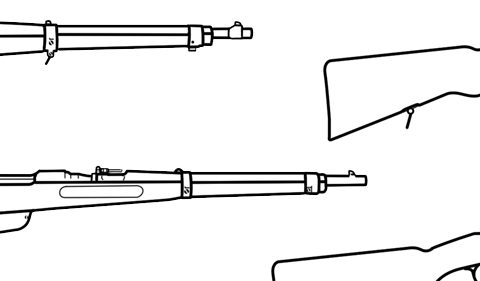
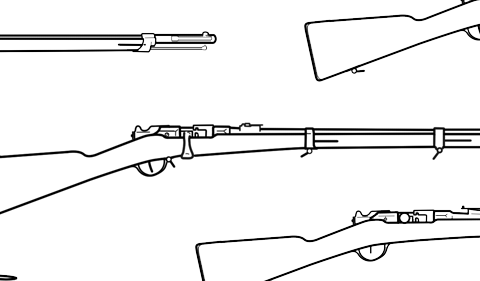
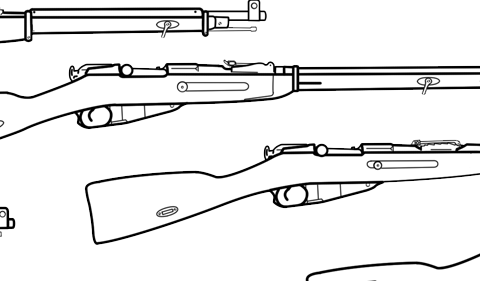
Could you also do an aricle on the Austrian Mannlicher series of rifles? I am very interested in this topic. I found the artcle on the Mannlicher M95/24 and M95M very educational.
Already in the works!
Enjoyed your little precis on the Dutch Mannlicher carbines. I have a variant you don’t list. It is a 1918 Hembrug with short handguard, wooden magazine cover, side front swivel per your article and a butt swivel on the bottom of the stock. The carbine is in near new condition with receiver in the white, never blued like the barrel and rest of other furniture. Oh yeah, the stock has a big 1918 Hembrug circle cartouche stamped on the right side So, who got issued this little gun and what model is it exactly? Inquiring mind want to know. Thanks in advance.//Jerald
Off the top of my head the only “mismatch” sling I know of is the No.3 Modified but if you have the time pop some pictures and email them over to us. Just click the letter icon on the left. I will take a look for you.
I almost bought one of these when some came through Springfield Sporters(?) in the ’90s.
I really like the Commission ’88s that I’ve owned, but I suspected that 6.5mm rimmed ammunition would quickly become scarce. With reloadable components being even scarcer, I passed. My suspicions were well founded. My bet would be that only Old Western Scrounger (or whomever they are now) would have reloadable cases, and they’d come at a premium price.
Still, they’re elegant rifles.
Cases can be easily made from 30-40 or 303.
just today a guy gave me a constabulary carbine for a beat up double barrel shotgun. the carbine had been converted to .303 by the indonesian government
Are any M1895 parts interchangeable with German M88 commission rifles?
Thanks Jackson
Hello,
I love all your guides as they are professionally done. Would you know what a large letter R in a circle stamped on a Dutch m-95 carbine buttstock signify? I would appreciate your help.
Thanks, Frank.